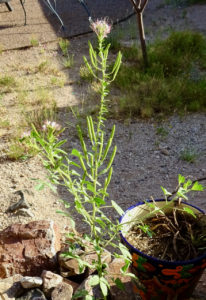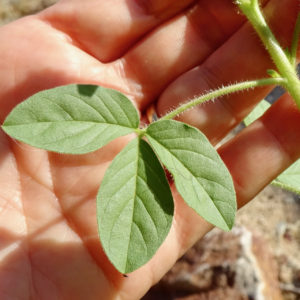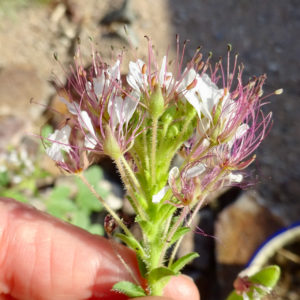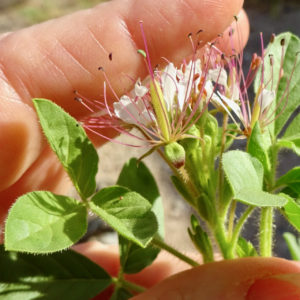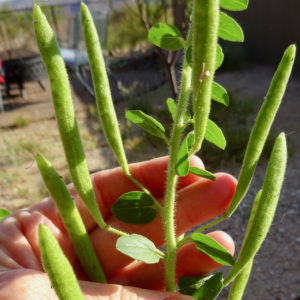Clammyweed
Polanisia dodecandra
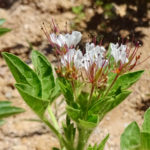
About the Plant
The long, reddish-purple stamen give this plant its name: redwhisker clammyweed. The plant is covered with sticky hairs that make it feel cold and damp to the touch ("clammy") and release an unpleasant odor if crushed. Found in many states as well as southern Canada and northern Mexico, redwhisker clammyweed is an annual that does well in dry, sandy spots. It can grow to 3 feet but is often shorter in Arizona unless ample moisture is available. Redwhisker clammyweed can bloom as early as May but is most often seen after the monsoon rains begin.
Redwhisker clammyweed needs no care from you other than to leave it alone until it dies back and seeds are released. This plant often appears around newly constructed homes, reseeding for a year or two, then disappearing.
Notes:
- Usually considered an annual, redwhisker clammyweed has been reported to occassionally overwinter.
- Redwhisker clammyweed has three subspecies. In southern Arizona, the most common subspecies is subsp. trachysperma. This subspecies has large petals and very long stamen which are often twice the length of the petals.
- The clammyweeds (genus Polanisia) are closely related to spiderflowers (genus Cleome), and the flowers have a similar appearance, though Cleome flowers never have more than 6 stamen. The two genera can be distinguished in fruit: clammyweeds hold their fruit erect; spiderflower fruit projects outward or hangs down.
- Based on recent research, clammyweeds (and spiderflowers) are now placed in the Cleomaceae, the Cleome family. Both were previously in the Capparaceae, the capper family.
Wildlife value: attracts butterflies, moths, and other insects.
More Information
Technical botanical description from SEINet
Description of subsp. trachysperma from SEINet
ID Characteristics
Redwhisker clammyweed is an annual that can grow to 3 feet with ample moisture but is often shorter in dry spots. It is erect with just a few branches.
The leaves are alternate and palmate, with 3 leaflets. The leaves as well as the stems are covered with sticky hairs. The leaves are up to 4 inches long and wide, with the petiole and the leaflets each about half that length. The leaflets are untoothed, with distinct pinnate veining.
The flower cluster (inflorescence) is a terminal raceme - the inflorescence is at the end of the branches and each flower is stalked (stalk up to an inch long in redwhisker clammyweed). The inflorescence continues to elongate as new flowers are formed near the tip and the lower, older flowers produce fruit (see first photo, above). The inflorescence can be almost a foot long, with more than two dozen flowers, often half the height of the plant. There is a leaflike bract, up to 3/4 inch long, at the base of each flower.
Each flower of redwhisker clammyweed has 4 sepals and 4 petals. The petals of subspecies trachysperma are white though the reddish cast of the sepals and stamen may give an overall pink effect. Petals of other subspecies may be white or pink to purple. The petals are 3/4 - 1 inch long, narrow at the base and spreading at the tip. Two of the petals are slightly shorter than the other two. There are 10 - 20 (often 12) bright reddish-purple stamen, of unequal length and maturity. In subspecies trachysperma the stamen are often twice the length of the petals. In the photo above, a fruit is starting to grow.
Each flower produces an elongated fruit, up to 2.5 inches long and almost 1/2 inch wide, held at the end of the flower stalk. The stalk is roughly horizontal while the fruit is held upright. The thin style may remain briefly on the tip of the fruit (see photo, fruit on left, second from bottom). The fruit is hairy/glandular like the rest of the plant.
